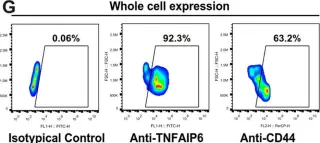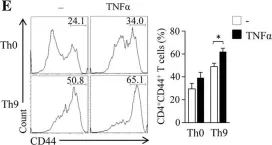Clinical approaches for cancer therapy face several interrelated challenges involving inefficient drug delivery, potential adverse side effects, and inconvenience. Here, we present an integrated wearable flexible ultrasound microneedle patch (wf-UMP) that serves as a portable platform for convenient, efficient, and minimally invasive cancer therapy. The wf-UMP adopts an all-in-one bioelectronic concept, which integrates a stretchable lead-free ultrasound transducer array for acoustic emission, a bioadhesive hydrogel elastomer for robust adhesion and acoustic coupling, and a dissolvable microneedle patch loaded with biocompatible piezoelectric nanoparticles for painless drug delivery and reactive oxygen species generation. With soft mechanical properties and enhanced electromechanical performance, wf-UMP can be robustly worn on curved and dynamic tissue surfaces for easy and effective manipulation. In preclinical studies involving mice, wf-UMP demonstrated notable anticancer effects by inducing tumor cell apoptosis, amplifying oxidative stress, and modulating immune cell proliferation. Furthermore, the synergistic immunotherapy induced by wf-UMP and Anti-PD1 further improved anticancer immunity by activating immunogenic cell death and regulating macrophages polarization, inhibiting distant tumor growth and tumor recurrence.
© 2025. The Author(s).
Product Citations: 45
Wearable flexible ultrasound microneedle patch for cancer immunotherapy.
In Nature Communications on 18 March 2025 by Xue, H., Jin, J., et al.
-
Mus musculus (House mouse)
-
Cancer Research
-
Immunology and Microbiology
In STAR Protocols on 20 December 2024 by Syed, A., Kobayashi, M., et al.
A combination of hematopoietic stem cell (HSC)- and endothelial cell (EC)-lineage-tracing mouse models enables us to determine blood cell origins. We present a protocol to induce cell labeling in vivo and to trace labeled hematopoietic cells to segregate their origins. We describe the steps for harvesting various hematopoietic tissues, antibody staining, and analyzing the Tomato+ percentages within each immune cell population. We also show how to estimate HSC- and EC-derived percentages of the target cell populations. For complete details on the use and execution of this protocol, please refer to Kobayashi et al.1.
Copyright © 2024 The Author(s). Published by Elsevier Inc. All rights reserved.
In Nature Communications on 30 October 2024 by Li, W. P., Mao, X. T., et al.
T cell expansion has a crucial function in both autoimmune and chronic inflammatory diseases, with cycling T cells contributing to the pathogenesis of autoimmune diseases by causing uncontrolled immune responses and tissue damage. Yet the regulatory mechanisms governing T cell expansion remain incompletely understood. Here we show that the enzyme N-acetyltransferase 10 (NAT10) regulates T cell activation and proliferation upon antigen stimulation. T cell-specific NAT10 deficiency in mice reduces the number of mature T cells in peripheral lymphoid organs. Mechanistically, NAT10 acetylates RACK1 at K185, preventing subsequent RACK1 K48-linked ubiquitination and degradation. The increased RACK1 stability alters ribosome formation and cellular metabolism, leading to enhanced supply of energy and biosynthetic precursors and, eventually, T cell proliferation. Our findings thus highlight the essential function of NAT10 in T cell self-renewal and metabolism and elucidate NAT10 mode of action for the potential development of novel therapies for immune-related disorders.
© 2024. The Author(s).
-
Mus musculus (House mouse)
-
Immunology and Microbiology
Preprint on BioRxiv : the Preprint Server for Biology on 17 October 2024 by Bi, H., Ren, K., et al.
Deleterious germline DDX41 variants constitute the most common inherited predisposition disorder linked to myeloid neoplasms (MNs). The role of DDX41 in hematopoiesis and how its germline and somatic mutations contribute to MNs remain unclear. Here we show that DDX41 is essential for erythropoiesis but dispensable for the development of other hematopoietic lineages. Using stage-specific Cre models for erythropoiesis, we reveal that Ddx41 knockout in early erythropoiesis is embryonically lethal, while knockout in late-stage terminal erythropoiesis allows mice to survive with normal blood counts. DDX41 deficiency induces a significant upregulation of G-quadruplexes (G4), noncanonical DNA structures that tend to accumulate in the early stages of erythroid precursors. We show that DDX41 co-localizes with G4 on the erythroid genome. DDX41 directly binds to and dissolves G4, which is significantly compromised in MN-associated DDX41 mutants. Accumulation of G4 by DDX41 deficiency induces erythroid genome instability, defects in ribosomal biogenesis, and upregulation of p53. However, p53 deficiency does not rescue the embryonic death of Ddx41 hematopoietic-specific knockout mice. In parallel, genome instability also activates the cGas-Sting pathway, which is detrimental to survival since cGas-deficient and hematopoietic-specific Ddx41 knockout mice are viable without detectable hematologic phenotypes, although these mice continue to show erythroid ribosomal defects and upregulation of p53. These findings are further supported by data from a DDX41 mutated MN patient and human iPSC-derived bone marrow organoids. Our study establishes DDX41 as a G4 dissolver, essential for erythroid genome stability and suppressing the cGAS-STING pathway.
-
Mus musculus (House mouse)
In Journal of Neuroinflammation on 4 October 2024 by Moon, S., Park, Y., et al.
IL-2 regulates T cell differentiation: low-dose IL-2 induces immunoregulatory Treg differentiation, while high-dose IL-2 acts as a potent activator of cytotoxic T cells and NK cells. Therefore, high-dose IL-2 has been studied for use in cancer immunotherapy. We aimed to utilize low-dose IL-2 to treat inflammatory diseases such as obesity and insulin resistance, which involve low-grade chronic inflammation.
Systemic administration of low-dose IL-2 increased Treg cells and decreased inflammation in gonadal white adipose tissue (gWAT), leading to improved insulin sensitivity in high-fat diet-fed obese mice. Additionally, central administration of IL-2 significantly enhanced insulin sensitivity through the activation of the sympathetic nervous system. The sympathetic signaling induced by central IL-2 administration not only decreased interferon γ (IFNγ) + Th1 cells and the expression of pro-inflammatory cytokines, including Il-1β, Il-6, and Il-8, but also increased CD4 + CD25 + FoxP3 + Treg cells and Tgfβ expression in the gWAT of obese mice. These phenomena were accompanied by hypothalamic microgliosis and activation of pro-opiomelanocortin neurons. Furthermore, sympathetic denervation in gWAT reversed the enhanced insulin sensitivity and immune cell polarization induced by central IL-2 administration.
Overall, we demonstrated that IL-2 improves insulin sensitivity through two mechanisms: direct action on CD4 + T cells and via the neuro-immune axis triggered by hypothalamic microgliosis.
© 2024. The Author(s).
-
Mus musculus (House mouse)
-
Endocrinology and Physiology
-
Immunology and Microbiology
In Stem Cell Res Ther on 24 September 2022 by Li, L., Yang, L., et al.
Fig.4.G

-
FC/FACS
-
Collected and cropped from Stem Cell Res Ther by CiteAb, provided under a CC-BY license
Image 1 of 3
In Stem Cell Res Ther on 24 September 2022 by Li, L., Yang, L., et al.
Fig.4.H

-
FC/FACS
-
Collected and cropped from Stem Cell Res Ther by CiteAb, provided under a CC-BY license
Image 1 of 3
In J Immunother Cancer on 4 February 2019 by Jiang, Y., Chen, J., et al.
Fig.2.E

-
FC/FACS
-
Collected and cropped from J Immunother Cancer by CiteAb, provided under a CC-BY license
Image 1 of 3


